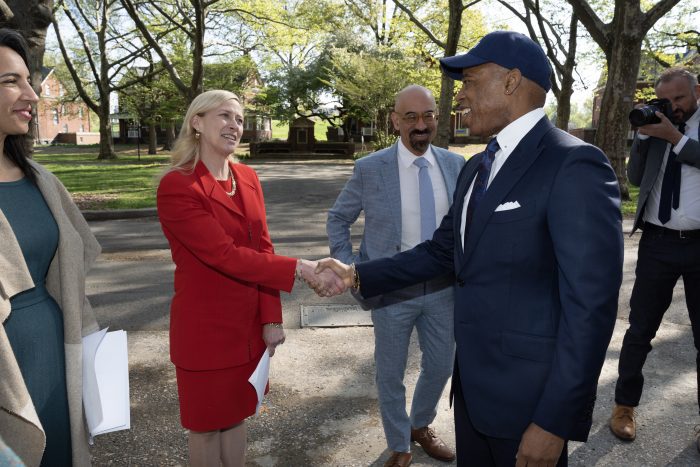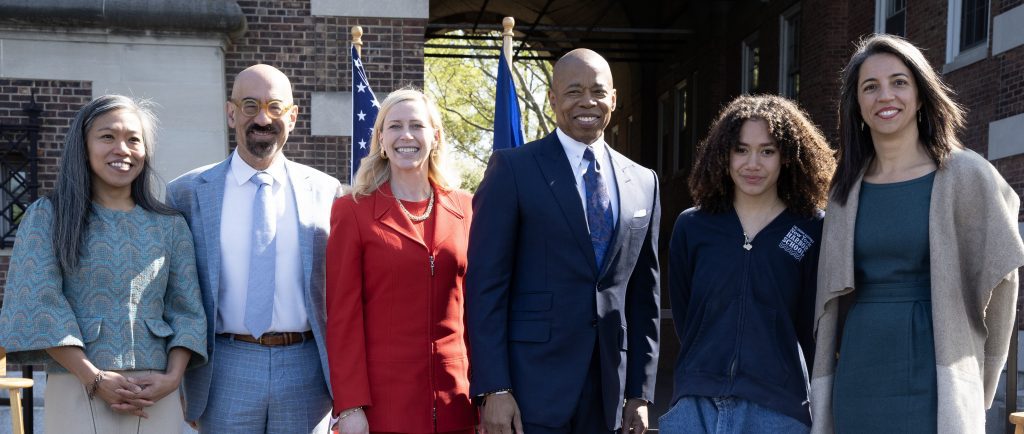When the City of New York and the Trust for Governors Island chose Stony Brook University to lead a collection of institutions to build a new climate solutions center on Governors Island, the moment marked both an ending and a beginning.
For Skidmore, Owings & Merrill, which provided a concept-level design for the institution, the announcement brings SOM and the work it will do with the Manhattan-based landscape architecture firm MNLA to a new stage.
“The work we have done is essentially through a concept level of design,” said Keith O’Connor, principal at SOM. “Now that Stony Brook has been selected, we’ll be doing much more detailed work in schematic design and design development.”
While the plans call for the biggest mass timber building in New York City, the developers of the project, which will start in 2025 and is expected to open in 2028, have not gotten into the details about all the materials they will use and where they will purchase them.
As with so many other decisions related to a center dedicated to understanding and combating the effects of climate change, the choices for the materials will reflect the center’s goals.
“It’s not only about how we come up with the best system and most appropriate design,” O’Connor said. “It has to be a holistic picture. It’s all about the full life of the materials — everything from where they originate, how they are processed and how they are transported and shipped.”
The decisions will consider the future and the way the center, which Stony Brook has named the New York Climate Exchange, might reuse or adapt the materials.
In addition, SOM and Stony Brook are committed to executing changes in the construction of the 400,000-square-foot facility, which will include 230,000 square feet of new buildings and 170,000 square feet of refurbished space.
SOM will share information related to the process.
“We need to help other people understand how they, too, can make intelligent choices,” O’Connor said.
SOM plans to implement tried and true technologies and push the envelope in doing things that haven’t been done.
“What we do with the Exchange can help move the market,” said O’Connor.
SOM has been working with mass timber in several projects, including for the Billie Jean King Library in Long Beach, California. SOM will also use mass timber as a part of the High Line-Moynihan Train Hall Connector, a pedestrian path between Moynihan Train Hall, Manhattan West and the High Line.
O’Connor explained that mass timber doesn’t need an additional finish on top of it, which allows builders and designers to use less material.
The design of the buildings will be 18 feet in elevation, which is 10 feet higher than the existing structures. Stony Brook and SOM wanted the buildings to have resilience amid future storm surges.
The goal of the Exchange is to use effective design techniques to enhance resilience.
Part of the proposal involves altering the stone sea wall, a hard-engineered armored edge of the island, and replacing it with a living shoreline that is ecologically and landscape based.
The island will have a variety of plantings to create a terrestrial and diverse habitat, O’Connor added.
Working with MNLA, SOM is coming up with plantings that are appropriate for conditions ranging from elevations of five and eight feet with exposure to salt spray up to 18 feet.
O’Connor explained that the teams involved in the project are eager to start working. The next steps will include design engineering, procurement and construction, which will “take some time.”
O’Connor was pleased to be involved in a project that is “profoundly meaningful to our city and society.” He suggested such work might occur once or twice in a generation or a career.







